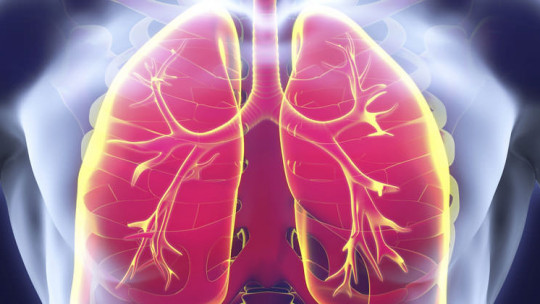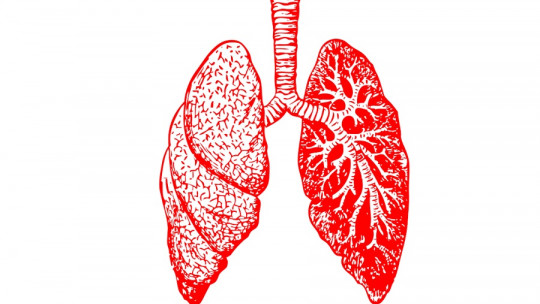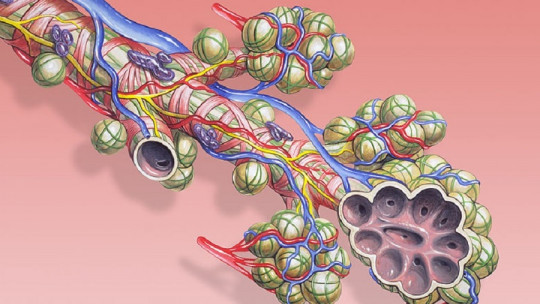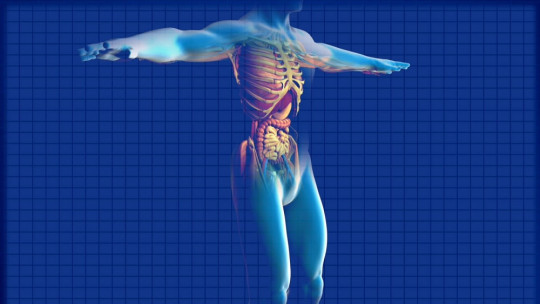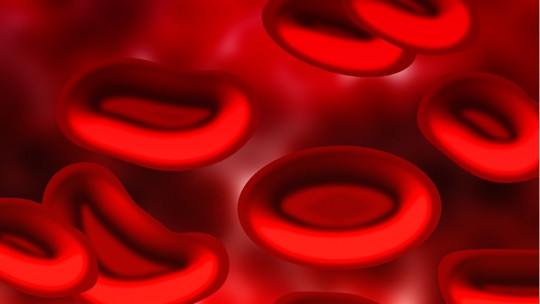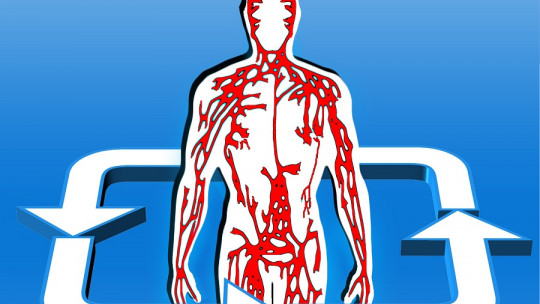Any condition that puts the health of the lungs at risk is extremely serious An essential activity for the correct functioning of the body is carried out in this organ, and it is none other than gas exchange.
In other words, it is where oxygen (O2) is collected, a necessary element for cells to obtain energy for their functions; and carbon dioxide (CO2) is released, a residual element of this energy obtaining process and which is toxic to cells, so it is necessary to expel it from the body. So any anomaly that affects this exchange is harmful to the person’s health.
Pneumonia: inflammation of the lung
There are many diseases that affect the lungs, one of the most common being pneumonia. Its importance is such that this condition is among the most frequent causes of death in the world.
Several criteria are used to differentiate different types of pneumonia, but they all share that they are inflammations due to an immune response to an infectious agent in the alveoli (gas exchange area) and surrounding tissues.
The usual symptoms of pneumonia are cough with sputum formation, breathing difficulties, chest pains, fever and chills. The level of severity depends on the infectious agent
The use of criteria to identify pneumonia is a necessary method to know which of them the patient is suffering from and thus follow the appropriate treatment for improvement. Pneumonia is a group of diseases, each one caused by a different microorganism. There are many ways to separate the different types of pneumonia, here we will present several of these criteria, but they are not the only ones for this task.
Types of pneumonia according to the causative agent
The classic classification separates pneumonia by the pathogen that causes it, but at a clinical level it is not very useful, because at the beginning of treatment, samples have not yet been analyzed to know the infectious agent that the patient has. However, for a generalized study of the disease it is ideal.
1. Gram positive bacteria
There is a criterion to separate bacteria which is the use of gram stain , which, depending on how the cell is stained, differentiates between gram positive and gram negative bacteria. In the case of positives in this stain, there are two well-known cases.
Pneumococcal pneumonia is a type of pneumonia caused by the bacteria Streptococcus pneumoniae, commonly known as pneumococcus. It is the most common case, since there are almost 80 different types of pneumococci, and each one needs its own antibody, that is, being infected by one of these does not immunize you from the rest. It is normally generated after a viral infection that weakens the respiratory tract, making it easier to enter the lungs.
The other case is staphylococcal pneumonia, an infection caused by the bacteria Staphylococcus aureus. Rs is rare in cases outside of hospitals, however inside them it is more common to become infected, since it usually affects children and older people, or people with previous pathologies. The appearance of pus is very typical with this bacteria.
2. Gram negative bacteria
Having seen the first group, now it’s time for the gram negatives. Unlike the first, these tend to be much more aggressive and, therefore, they are a more serious type of pneumonia. Some example bacteria are Klebsiella, Legionella or Pseudomonas and they are infections more likely to be acquired in hospitals. They have a great capacity to damage tissue relatively quickly, which is why they are very serious conditions, with the possibility of being lethal.
For example, the Hemophylus influenzae bacteria, especially its type B strain, causes serious infections in the meninges or lungs in children under six years of age, but thanks to its vaccine it does not cause major problems today.
3. Atypical pneumonias
This group includes the types of pneumonia caused by bacteria that are not included in the previous ones , in addition to generating a much milder pneumonia than those already mentioned before, which would be typical. Mainly microorganisms of the genus Mycoplasma and Chlamydia are found here. A good example of these is pneumonia caused by Mycoplasma pneumoniae, which is the most common cause among people between 5 and 35 years of age.
4. Viral pneumonias
Inflammations in the lungs can also be caused by the entry of viruses, such as the flu or herpes. The main problem with this is that they are not treated with drugs, and antivirals are only used in serious cases.
5. Fungal pneumonias
This type of pneumonia is normally very mild and even the infected person does not realize that they have it. Caused by fungal infection in the respiratory tract, mainly by these three: Histoplasma capsulatum, Coccidioides immitis and Blastomyces dermatitidis.
Pneumonia according to fungal area
Not all infections affect the same area of the respiratory system or in the same way For this reason, there is also another criterion to separate pneumonia.
In this way we can distinguish with lobar pneumonia, which affects an entire lobe of the two that the lungs have; bronchopneumonia, which affects both the lungs themselves as well as the air transport pathways (the bronchi); necrotizing pneumonias, in which affected areas of the respiratory system cause necrosis or tissue death; or interstitial pneumonia, inflammation that affects the connective tissue of the alveoli.
The criterion of necrosis formation is very useful to identify its cause, since they are normally anaerobic microorganisms, that is, they cannot live in an environment with oxygen.
Depending on the scope of acquisition
This is a more decisive classification for rapid clinical identification and refers to whether the pneumonia has been obtained outside or inside a hospital. They are not the same microorganisms in these two environments, which makes it possible to rule out an infectious agent simply by knowing where the patient was infected.
The first type of pneumonia is called nosocomial or in-hospital pneumonia, and are those that manifest when admitted to a hospital for more than 48 hours and were not in incubation prior to entering the center. Here the infectious agents are more resistant, since a hospital has a higher level of hygiene than many other locations or the people are weakened and are therefore admitted to a hospital.
For the rest, they are grouped into community-acquired or community-acquired pneumonia, and as the name indicates, it is when the infection has not originated within a health center.
Depending on the guest
The last criterion that we will mention to differentiate pneumonia is according to the patient’s immunity. Like is logic, It is not the same as a person having an operational immune system that does not , and this serves to identify the infectious agent that causes it. With this criterion, immunocompetent and immunosuppressed pneumonias are differentiated.
Think that the defensive system stops many of these pathogens before they can act, so their partial or total absence is a risk factor. Opportunistic infections take advantage of this lack of defense, since they are microorganisms that under normal conditions do not cause illness.
The case of Coronavirus
Finally, we can present a case that can cause pneumonia that affects us all due to its global reach. I am not talking about anything other than SARS-CoV-2, the cause of COVID-19 Commonly called coronavirus, it is a virus of the Coronaviridae family, which infects its hosts in their respiratory tract.
The general cycle of a virus within its host is to infect cells, where it injects its genetic content and takes control of its mechanisms for the duplication and replication of that material. In addition, it is also used to manufacture other protein components that the virus forms (such as the capsule, where the genetic content is stored). In other words, the virus dominates other cells to make copies of it and thus grow in number. Once a limit of units is reached, it activates the destruction of the cell to release the viruses.
In the case of the coronavirus, the pathogen invades cells of the respiratory tract, mainly the alveoli, so the infection and destruction of cells in this tissue affects our breathing. Therefore, its main symptoms are fever (infection), cough and feeling of shortness of breath (affects the gas exchange area). In more severe cases, pneumonia and acute respiratory syndrome, lung failure due to the accumulation of blood (edema) in the organ, occur.
The general problem with viruses is that no medication is used for their treatment, since antivirals are of restricted use. Normally the aim is to minimize symptoms and use devices that facilitate functions (for example, respirators). And the vaccine is a preventive element to avoid becoming infected with the disease. Therefore, in this case, what is sought as the quickest solution is an effective treatment that helps minimize the damage of the virus and, most importantly, take preventive measures to stop the spread.

